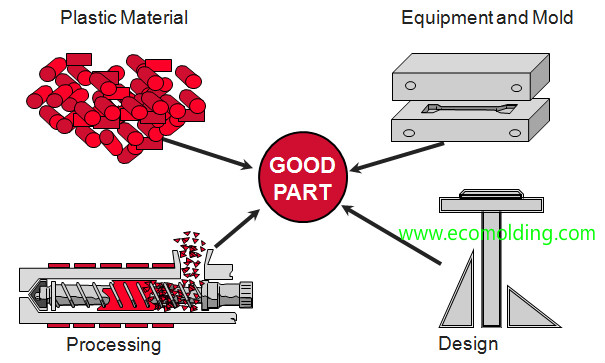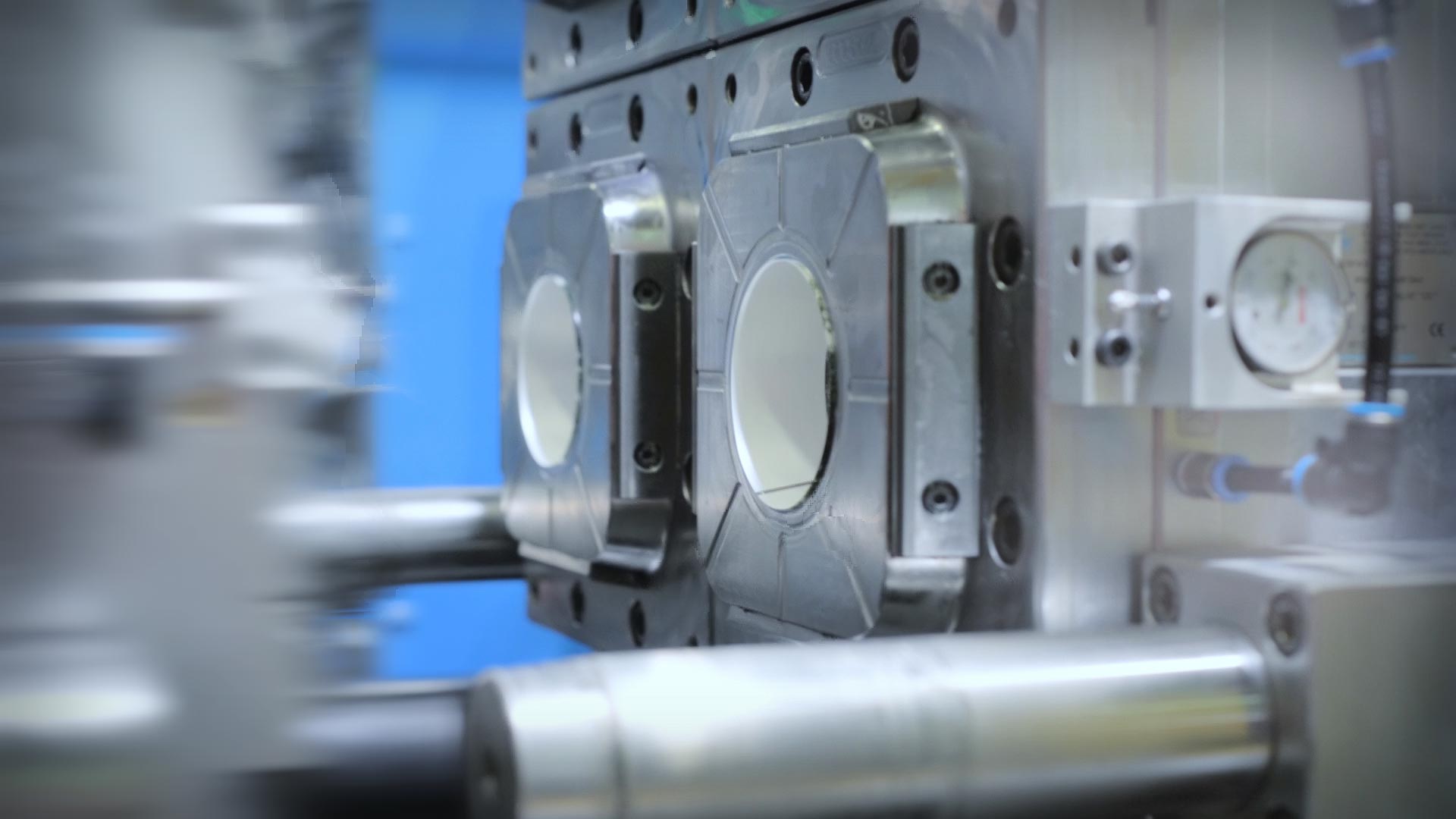How Plastic Injection Molding Guarantees Consistency and Accuracy in Production
How Plastic Injection Molding Guarantees Consistency and Accuracy in Production
Blog Article
Comprehending the Basics of Plastic Shot Molding Procedures
Plastic injection molding serves as a foundation of contemporary production, offering a methodical technique to generating complex elements with accuracy. This procedure not just encompasses the essential steps of melting and infusing products right into mold and mildews yet additionally involves a nuanced understanding of various affecting elements, such as temperature and pressure. As markets significantly require performance and quality, the ins and outs of this technique end up being extra vital. Exploring these vital elements could reveal how even minor adjustments can lead to considerable improvements in production end results, raising inquiries concerning the possibility for advancement in this well established procedure.
What Is Plastic Shot Molding?
Plastic shot molding is a widely used production process that changes thermoplastic and thermosetting products into specific and complex forms. This strategy is preferred for its ability to generate high quantities of identical components with remarkable precision, making it an essential technique in numerous industries, consisting of auto, consumer products, and clinical tools.
The process involves melting the selected plastic product and infusing it right into a mold and mildew under high pressure. The mold, designed to the specs of the wanted component, allows the molten plastic to form as it solidifies and cools. When the material has solidified, the mold and mildew is opened up, and the ended up component is ejected.
Plastic injection molding provides a number of benefits, consisting of lowered waste, consistency in production, and the capability to integrate complex layouts that might be testing with various other making approaches. Additionally, it supports a wide array of products, each providing distinct residential properties that can be customized for details applications. As sectors proceed to introduce, plastic shot molding stays at the leading edge, allowing the advancement of sophisticated products that meet evolving customer needs.
The Shot Molding Process
The injection molding procedure is a sophisticated technique that involves several vital stages to generate high-quality plastic parts. Originally, plastic pellets are fed right into a warmed barrel where they are merged a thick fluid. This molten plastic is after that injected under high pressure right into a precision-engineered mold, which shapes the product right into the desired form.
As soon as the mold is filled, the plastic is permitted to strengthen and cool, taking the shape of the mold cavity. Air conditioning time is vital, as it impacts the cycle time and the final properties of the shaped component. After enough air conditioning, the mold opens up, and the finished part is ejected making use of ejector pins.

Materials Utilized in Injection Molding
Various materials can be utilized in the shot molding procedure, each offering special properties that deal with specific applications. The most commonly made use of products consist of thermoplastics, thermosetting plastics, and elastomers.

Thermosetting plastics, like epoxy and phenolic materials, undergo a chemical adjustment during the healing process, leading to an inflexible, inflexible structure. These products are ideal for applications needing high warmth resistance and structural stability, often utilized in vehicle components and electric insulators.
Elastomers, including silicone and rubber-based materials, offer versatility and strength. Their unique homes make them ideal for applications that require flexibility, such as seals and gaskets.
Additionally, specialty products like bio-based plastics and composites are acquiring traction for their environmental advantages and improved efficiency attributes, widening the extent of shot molding applications in numerous sectors. Recognizing the residential or commercial properties of these materials is crucial for picking the ideal kind for specific projects.
Benefits of Shot Molding
Shot molding sticks out as an extremely effective manufacturing process that offers numerous benefits for producing complex parts with accuracy. One of the most considerable benefits is the ability to produce intricate styles that would be challenging or impossible to accomplish with other methods (Plastic Injection Molding). The procedure enables for comprehensive features and limited tolerances, guaranteeing top quality components
In addition, injection molding is known for its quick production capabilities, making it an excellent selection for high-volume manufacturing. As soon as the mold and mildew is created, components can be created quickly, lowering lead times and raising general productivity. This performance not only decreases production prices however additionally offers an one-upmanship in the market.
The adaptability of materials made use of in injection molding better important source enhances its allure. A large range of thermoplastics and thermosetting polymers can be employed, enabling manufacturers to select products that finest fulfill their certain needs, including adaptability, heat, and stamina resistance.
Furthermore, the procedure decreases waste, as excess material can typically be reused and recycled. This sustainability aspect adds to a minimized environmental influence, making shot molding a responsible manufacturing option. On the whole, the benefits of shot molding make it a preferred method for numerous markets.
Aspects Influencing Item Quality
While numerous elements can influence product high quality in injection molding, comprehending these aspects is important for attaining optimum outcomes. Trick facets consist of product choice, processing specifications, and mold style.
Material selection plays a vital role, as various polymers show distinct buildings that influence flowability, stamina, and thermal stability. Insufficient product selection can cause flaws such as bending or incomplete filling.
Handling criteria, including temperature, pressure, and cycle time, must be meticulously regulated. Variants in these settings can cause variances partially dimensions and surface area finish. For example, look here exceedingly high temperatures may create deterioration of the polymer, while inadequate stress can result in brief shots.
Mold layout is similarly important, as it establishes the flow of the molten plastic and the cooling procedure. Badly designed mold and mildews may cause uneven air discover here conditioning prices, causing residual anxieties and dimensional mistakes.

Final Thought
To conclude, plastic injection molding serves as a crucial manufacturing process that enables the efficient manufacturing of high-grade parts. Proficiency of the injection molding process, including the understanding of products and the impact of different elements on product quality, is essential for attaining ideal results. The advantages of this approach, such as cost-effectiveness and style versatility, further underscore its value throughout multiple sectors, strengthening its condition as a preferred selection for high-volume manufacturing.
Plastic shot molding offers as a foundation of modern production, supplying a methodical technique to creating complex components with precision.Plastic shot molding uses several benefits, including reduced waste, uniformity in production, and the capacity to integrate intricate styles that may be testing with other making methods (Plastic Injection Molding). As sectors continue to introduce, plastic injection molding continues to be at the forefront, making it possible for the advancement of innovative products that fulfill developing customer demands
The injection molding procedure is a sophisticated strategy that involves a number of key stages to generate top quality plastic parts.In conclusion, plastic injection molding offers as a critical manufacturing procedure that enables the effective manufacturing of top notch elements.
Report this page